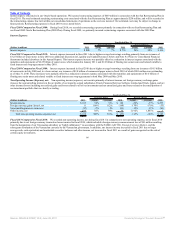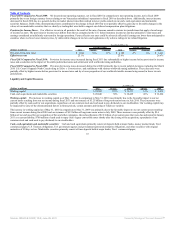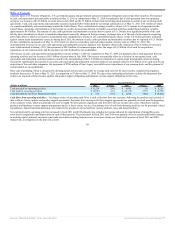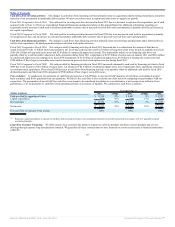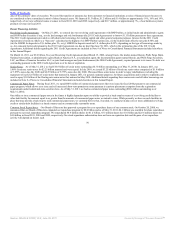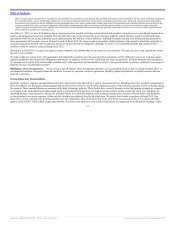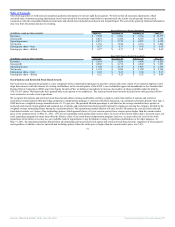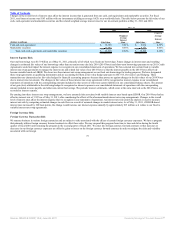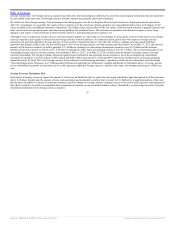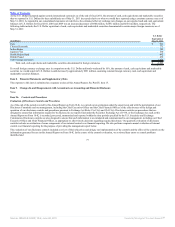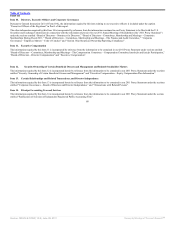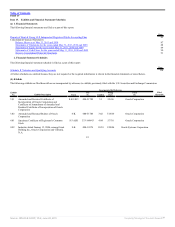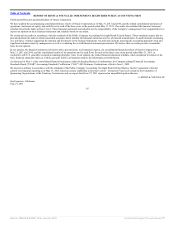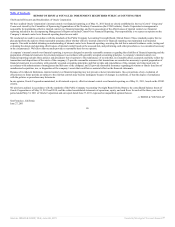Oracle 2010 Annual Report Download - page 80
Download and view the complete annual report
Please find page 80 of the 2010 Oracle annual report below. You can navigate through the pages in the report by either clicking on the pages listed below, or by using the keyword search tool below to find specific information within the annual report.
Table of Contents
currency transactions. Our foreign currency exposures typically arise from intercompany sublicense fees and other intercompany transactions that are expected to
be cash settled in the near term. Our foreign currency forward contracts are generally short-term in duration.
We neither use these foreign currency forward contracts for trading purposes nor do we designate these forward contracts as hedging instruments pursuant to
ASC 815. Accordingly, we record the fair values of these contracts as of the end of our reporting period to our consolidated balance sheet with changes in fair
values recorded to our consolidated statement of operations. The balance sheet classification for the fair values of these forward contracts is prepaid expenses and
other current assets for unrealized gains and other current liabilities for unrealized losses. The statement of operations classification of gains or losses upon
changes in fair values or cash settlement of these forward contracts is non-operating income (expense), net.
Although we have resumed our foreign currency forward contract program, we expect that we will continue to realize gains or losses with respect to our foreign
currency exposures, net of gains or losses from our foreign currency forward contracts. Our ultimate realized gain or loss with respect to foreign currency
exposures will generally depend on the size and type of cross-currency transactions that we enter into, the currency exchange rates associated with these
exposures and changes in those rates, the net realized gain or loss on our foreign currency forward contracts and other factors. As of May 31, 2011, the notional
amounts of the forward contracts we held to purchase U.S. Dollars in exchange for other major international currencies were $2.5 billion and the notional
amounts of forward contracts we held to sell U.S. Dollars in exchange for other major international currencies were $1.6 billion. The net unrealized gains of our
outstanding foreign currency forward contracts were nominal at May 31, 2011. As of May 31, 2010, we had a nominal amount of foreign currency forward
contracts outstanding. Net foreign exchange transaction gains (losses) included in non-operating income (expense), net in the accompanying consolidated
statements of operations were $11 million, $(149) million and $(65) million in fiscal 2011, 2010 and 2009, respectively. Included in the net foreign exchange
transaction losses for fiscal 2010 were foreign currency losses relating to our Venezuelan subsidiary’s operations, which are more thoroughly described under
“Non-Operating Income (Expense), net” in Management’s Discussion and Analysis of Financial Condition and Results of Operations above. As a large portion
of our consolidated operations are international, we could experience additional foreign currency volatility in the future, the amounts and timing of which may
vary.
Foreign Currency Translation Risk
Fluctuations in foreign currencies impact the amount of total assets and liabilities that we report for our foreign subsidiaries upon the translation of these amounts
into U.S. Dollars. In particular, the amount of cash, cash equivalents and marketable securities that we report in U.S. Dollars for a significant portion of the cash
held by these subsidiaries is subject to translation variance caused by changes in foreign currency exchange rates as of the end of each respective reporting period
(the offset to which is recorded to accumulated other comprehensive income on our consolidated balance sheet). Periodically, we may hedge net assets of certain
international subsidiaries from foreign currency exposure.
76
Source: ORACLE CORP, 10-K, June 28, 2011 Powered by Morningstar® Document Research℠


